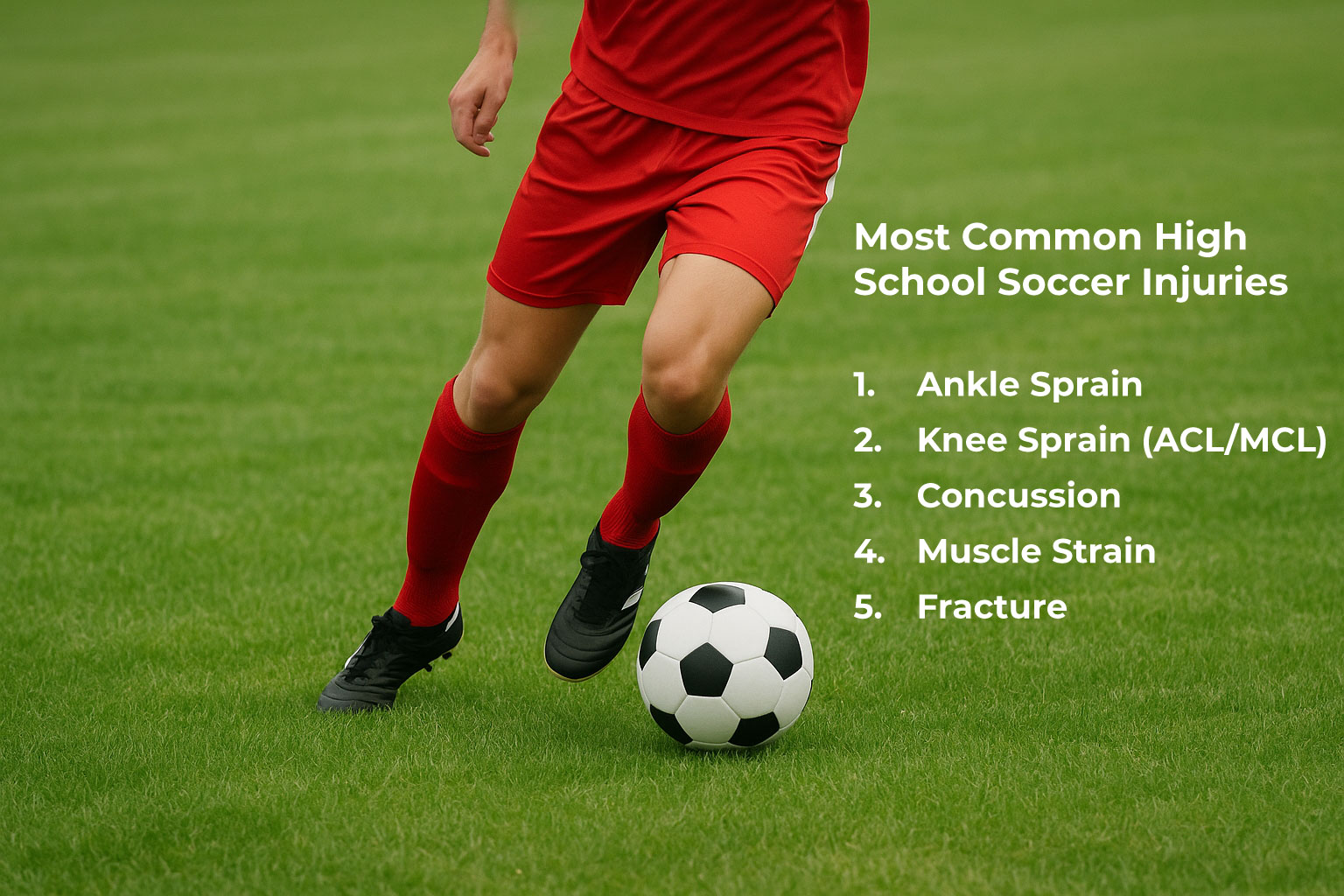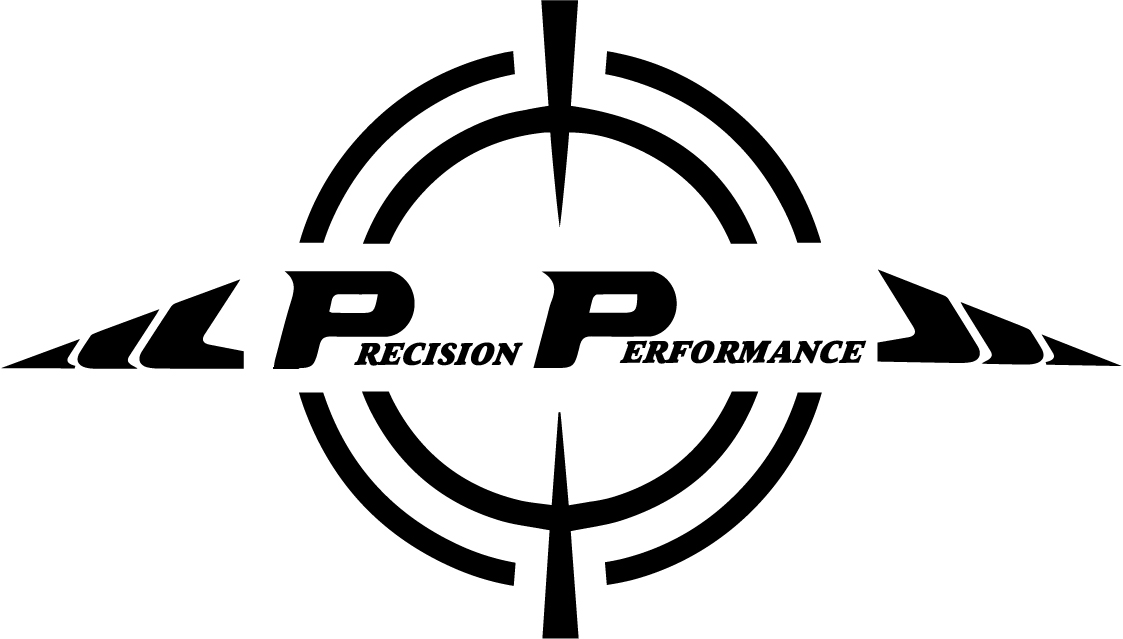Most Common Soccer Injuries in High School Athletes (An Outline on How to Reduce Them and A Quick Treatment Guide)
By Precision Performance & Therapy — Meridian, Idaho
Quick take: The most common high school soccer injuries are ankle sprains, knee sprains (including ACL/MCL), concussions, muscle strains (hamstrings/adductors), and fractures. Games are 3–5× riskier than practices, and girls’ teams show higher rates of knee sprains and concussions. The good news: pre-season training programs and personalized/neuromuscular warm-ups (such as the FIFA 11+) can significantly reduce injuries (especially for knees).

Why this matters (for parents, coaches, and athletes in Meridian & the Treasure Valley)
- Injuries happen in soccer participation.
- Lower-extremity injuries dominate high school soccer.
- Most injuries can be significantly reduced with targeted warm-ups, rule enforcement, and smart return-to-play progressions.
- Early physical therapy speeds recovery and helps athletes keep training while healing—the Precision Performance & Therapy specialty.
The Top 5 Most Common Injuries in High School Soccer
- Ankle Sprains
- Knee Sprains (ACL/MCL)
- Concussions
- Muscle Strains (hamstrings/adductors/hip flexors)
- Fractures (less common but still top-five)
What the research shows (highlights you can use)
- Ankle sprains lead the list (≈25–30% of all injuries).
- Knee sprains are #2, with girls showing higher ACL/MCL risk than boys.
- Concussions account for a meaningful share of game injuries—especially in girls.
- Games carry 3×–5× the risk of practices due to speed and contact.
- Pre-season training programs and personalized structured warm-ups can decrease injury risk. For example, the FIFA 11+ / neuromuscular warm-ups reduce total injuries by ~32%, knee injuries by ~50%, and overuse injuries by ~48% (Level I RCTs).
How Do Injuries Compare in Boys vs. Girls
Boys vs. Girls
- Girls > Boys for overall rate, knee sprains, and concussions.
- Boys see relatively more muscle strains and some fractures.
How Do Injuries Compare in Games vs. Practices
Games vs. Practices
- Games = 3–5× riskier than practices.
- Games: more contact → concussions & contusions rise.
- Practices: more non-contact → strains & some sprains.
Injury Reduction Playbook (what to do this (pre-) season)
On every training and game day:
- Participate in a training program preparing for the season and perform a structured warm-up that includes running drills + balance + strength + landing/cutting mechanics.
- Brace or tape high-risk ankles; add proprioception/balance work.
- Learn technique & rules: safe heading, fair contact, clear concussion protocols.
- Load management: participate in a conditioning program to build up fitness levels prior to the season. Monitor and adjust practice and game activity intensity and volume loads as needed.
Need a personalized warm-up program? Ask us—we’ll create a customized for you or your team.
Fast Treatment Guide (what to do right now)
Sprains (ankle/knee)
- Protect with brace/tape as appropriate; ice for pain; compression sleeve; early PT to restore range of motion, stability, and strength; staged return-to-play.
Muscle Strain
- Relative rest; ice for pain; compression; progressive PT focusing on mobility → isometrics → eccentrics → speed/change-of-direction.
Concussion
- Remove from play immediately; medical evaluation; graded return under provider guidance. PT can address neck pain, vestibular/balance, headaches, cognitive issues when indicated.
Contusion
- Ice/compression; activity modification; PT for range of motion and strength if symptoms linger.
Fracture
- Medical imaging and protection/immobilization as indicated; PT for mobility, stability, gait, balance, and sport-specific re-entry after clearance.
When to see Precision Performance & Therapy
- You want to keep training while rehabbing (safe modifications).
- Two+ sprains this year (you likely need a prehab plan).
- Persistent pain, swelling, or instability; concussion symptoms beyond a few days when determined appropriate by a doctor.
- Preseason screen + injury-risk reducing warm-up and training program build for your whole team.
Call/Text: 208-376-7313 • Location: Meridian, ID • Website: trainatprecision.com
Yard EE, Schroeder MJ, Fields SK, et al. The epidemiology of United States high school soccer injuries, 2005/06–2013/14. Am J Sports Med. 2016;44(8):2027-2034. doi:10.1177/0363546515622324
Soligard T, Myklebust G, Steffen K, et al. Comprehensive warm-up programme to prevent injuries in young female footballers: cluster RCT. BMJ. 2008;337:a2469. doi:10.1136/bmj.a2469
Olsen OE, Myklebust G, Engebretsen L, et al. Exercises to prevent lower limb injuries in youth sports: cluster RCT. BMJ. 2005;330(7489):449. doi:10.1136/bmj.38330.632801.8F
Leininger RE, Knox CL, Comstock RD. Epidemiology of youth soccer injuries presenting to US EDs, 1990–2003. Ambul Pediatr. 2007;7(2):65-70. doi:10.1016/j.ambp.2006.12.002
Schiff MA, O’Halloran L, Mack CD, et al. Soccer injuries among US youth, 1990–2007. Am J Sports Med. 2009;37(10):2077-2082. doi:10.1177/0363546509338216
Alentorn-Geli E, Myer GD, Silvers HJ, et al. Prevention of non-contact ACL injuries in soccer: mechanisms and risk factors. Knee Surg Sports Traumatol Arthrosc. 2009;17(7):705-715. doi:10.1007/s00167-009-0813-1
Rechel JA, Yard EE, Comstock RD. HS sports injuries in practice vs competition. J Athl Train. 2008;43(2):197-204. doi:10.4085/1062-6050-43.2.197
Note: The RCTs were conducted in European youth populations with similar age ranges; findings translate well to US high-school settings for prevention planning.
FAQ (for athletes & families)
How do we cut injuries this season?
Participate in a structured training program that includes neuromuscular training, strength training, and movement mechanics training. Brace/tape at-risk ankles, teach safe contact/heading, and track weekly workload.
When should we start PT?
Immediately after injury—or preseason for screening and a customized injury reducing warm-up and training program.
Can athletes keep training while rehabbing?
Usually yes—with sport-specific modifications. We specialize in rehab-to-performance so athletes stay game-ready.
Ready to make yourself or your team more resilient?
• Call/Text: 208-376-7313 • trainatprecision.com
Book a movement assessment screen or post-injury evaluation: Precision Performance & Therapy — Meridian, Idaho
